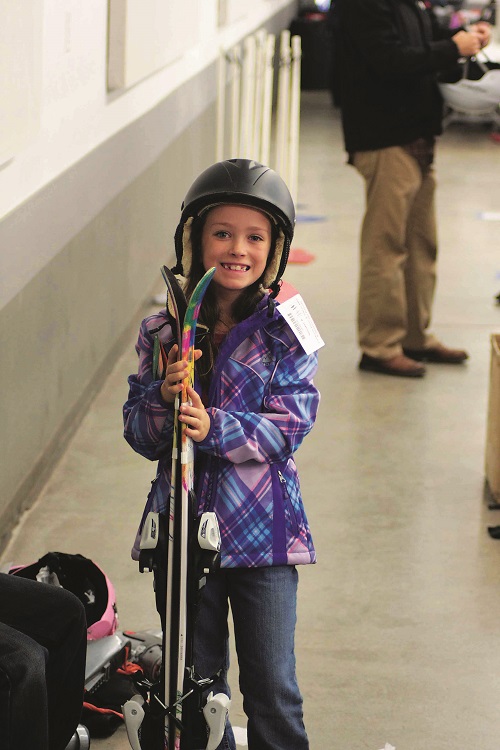Three Cups of Tea
Greg Mortenson
Penguin, 2007, 368 pages
Three Cups of Tea defies any common categories. Clearly some might call it the narrative of a future-Nobel Peace Prize candidate. Others find the majority of the book recounts an adventure where a modern explorer penetrates a difficult Third-World region and spurs decades of life-changing events. Still others might gauge the awesome impact of a non-political motif centered on the importance of bringing aid to Central Asia at the most pivotal period in modern times.
Greg Mortenson’s supporters reads like an A-list of the world’s greatest mountaineers, including Jack Tackle, Alex Lowe, Jon Krakauer and the executive director of the American Alpine Club Charlie Shimanski. Conrad Anker wrote, “As a former climber, Greg Mortenson knows something about hardship. But when you read Three Cups of Tea, you realize that the summit he is striving for as a humanitarian is much more difficult than any mountain.”
Considering that this book breaks molds and barriers every few pages, it’s easy to draw attention to it. “One Man’s Mission to Promote Peace…One School at a Time” is an understatement.
I confess this book was thrust upon me and I resisted reading it. But I haven’t regretted it for an instant. I found myself cringing at circumstances when he lived out of his car. I could taste the bitterness in his sour relationships. I gasped at the kidnapping. I could feel my conflicting attitudes grow more acute and more aware of the Karakoram region following 9/11 as the book recounted the unusual interior circumstances and behavior of Pakistan and Afghanistan in the last decade.
In order to better appreciate the book, it helps to understand the title. Three Cups of Tea stems from Haji Ali, a village chief, “Here, we drink three cups of tea to do business; the first you are a stranger, the second you become a friend, and the third, you join our family, and for our family we are prepared to do anything-even die.”
Autographed copies available at Mountain Gear.
Jon Jonckers
Water, Weather and the Mountain West
Robert W. Sandford
Rocky Mountain Books, 2007, 207 pages
In 1964, Bob Dylan sang, “…the times they re a-changin’ …” Today, Bob Sandford rephrases that refrain, “…the climate, it is a changin’.” The message in Water, Wind and the Mountain West can be broken into three basic parts. First, there is total agreement among practicing climate scientists worldwide that human actions are a key component in the shift toward a warmer future as shown by the Report of the UN Intergovernmental Panel on Climate Change. Second, change in climate will dramatically alter the hydrology of rivers with headwaters in the glaciated regions of the Rocky Mountains. Finally, with political inertia in North America carrying us the wrong direction it will require individual action to change course now.
The first third of the book summarizes several centuries of scientific climate study. Describing the “greenhouse” effect and the gasses that cause it, the reader learns how human activities add these gasses, especially carbon dioxide to the atmosphere.
Water, Weather and the Mountain West focuses not on the cause of global climate change, but on its effects. In the mountain west, as temperatures rise, glaciers melt faster in summer and receive less snow in the winter. Water supplies we depend on wane. Conservation becomes a must.
During past warming periods human population was smaller and more mobile than today. With rising sea level or dwindling supply communities picked up and moved. Today, assuming we could pick up our cities and move, there is no unpopulated place to put them.
Sandford observes the slow, often halfhearted response to climate change and potential water shortages in North American politics. He sees hope in individual citizens changing their ways. He describes measures for water conservation, fossil fuel use reduction and lobbying for water use and energy policy change in the local, regional and national political arenas.
To Dylan’s plea, “Come senators, congressmen / Please heed the call…” Sandford would add, Come citizens’, mayors / Off your couches, carry the ball.
Stan Miller
Skiing in the Shadow of Genghis Khan: Timeless Skiers of the Altai
Nils Larsen
2007, DVD 49 minutes
Skiing in the Shadow of Genghis Khan proves that rich, engaging ski films are still being made. Equal parts action and culture blend together to show a far away place where people still build and use skis in ways that date back thousands of years. Veteran filmmaker and accomplished skier Nils Larsen explores the ancient skiing traditions of the remote, almost invisible, people of the Altai Mountains-a far-off range where China, Kazakhstan, Russia and Mongolia intersect.
Nils’ three-year commitment to this film testifies to his research and to his efforts to gain local trust and penetrate the extremely rugged area. Throughout the film, he threads a connection between their ancient form of skiing, for winter travel and hunting, right up to the recreational skiing of today.
Some of the research for the film involved interviews, which in turn uncovered a few quirks about the villages. Viewers learn about the boarding school kids, what strange musical instruments pass the time, and how the people frequently refrained from talking about skiing because the next logical question after skiing is hunting, which means they could also be accused of poaching.
The film could have centered on a dozen aspects about this corner of China simply because Nils never limited his filming. He captures the process of making skis almost entirely with a hatchet. He partakes in the local drink. There’s remarkable footage of horse-drawn sleds on icy mountain trails. Piece by piece, the eccentric skiing, the various households, the enthusiastic and ever-curious children, and all of the cultural revelations build upon each other. Layer upon layer, the film assembles a story about an ancient mode of skiing that’s just barely holding on in modern times.
Thankfully, Nils succeeded in making the movie when he did. So many key elements pertaining to a sport so many people love are captured in this movie. Clearly, even snowboarders owe a little to all the centuries of men Skiing in the Shadow of Ghengis Khan.
Jon Jonckers













